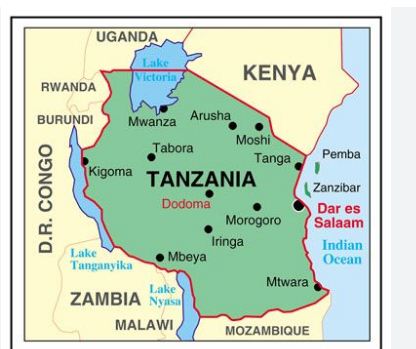April 8, 2024
Rwandan /Kigali Genocide
Why in News? Rwanda’s president recently decries ‘failure’ of international community 30 years after genocide:
Key points of president’s address:
• Rwanda’s President Paul Kagame has recently said the international community “failed” his country during the 1994 genocide, as he paid tribute to victims 30 years after Hutu extremists tore apart the nation.
• It was the international community which failed all of us, whether from contempt or cowardice.
What was Rwandan Genocide?
• During the 1994 Rwandan genocide, also known as 1994 Genocide Against the Tutsi in Rwanda, members of the Hutu ethnic majority in the east-central African nation of Rwanda murdered as many as 800,000 people, mostly of the Tutsi minority.
• Started by Hutu nationalists in the capital of Kigali, the genocide spread throughout the country with shocking speed and brutality, as ordinary citizens were incited by local officials and the Hutu Power government to take up arms against their neighbors.
• By the time the Tutsi-led Rwandese Patriotic Front gained control of the country through a military offensive in early July, hundreds of thousands of Rwandans were dead and 2 million refugees (mainly Hutus) fled Rwanda, exacerbating what had already become a full-blown humanitarian crisis.
History of Rwandan Ethnic Tensions:
• By the early 1990s, Rwanda, a small country with an overwhelmingly agricultural economy, had one of the highest population densities in Africa. About 85 percent of its population was Hutu; the rest were Tutsi, along with a small number of Twa, a Pygmy group who were the original inhabitants of Rwanda.
• Part of German East Africa from 1897 to 1918, Rwanda became a Belgian trusteeship under a League of Nations mandate after World War I, along with neighboring Burundi.
• Rwanda’s colonial period, during which the ruling Belgians favored the minority Tutsis over the Hutus, exacerbated the tendency of the few to oppress the many, creating a legacy of tension that exploded into violence even before Rwanda gained its independence.
• A Hutu revolution in 1959 forced as many as 330,000 Tutsis to flee the country, making them an even smaller minority. By early 1961, victorious Hutus had forced Rwanda’s Tutsi monarch into exile and declared the country a republic. After a United Nations referendum that same year, Belgium officially granted independence to Rwanda in July 1962.
• Ethnically motivated violence continued in the years following independence. In 1973, a military group installed Major General Juvenal Habyarimana, a moderate Hutu, in power.
• The sole leader of the Rwandan government for the next two decades, Habyarimana founded a new political party, the National Revolutionary Movement for Development (NRMD). He was elected president under a new constitution ratified in 1978 and reelected in 1983 and 1988 when he was the sole candidate.
• In 1990, forces of the Rwandese Patriotic Front (RPF), consisting mainly of Tutsi refugees, invaded Rwanda from Uganda. Habyarimana accused Tutsi residents of being RPF accomplices and arrested hundreds of them.
• Between 1990 and 1993, government officials directed massacres of the Tutsi, killing hundreds. A ceasefire in these hostilities led to negotiations between the government and the RPF in 1992, resulting in the Arusha Peace Accords.

April 24, 2024
April 24, 2024
August 5, 2022
July 27, 2022
July 27, 2022
